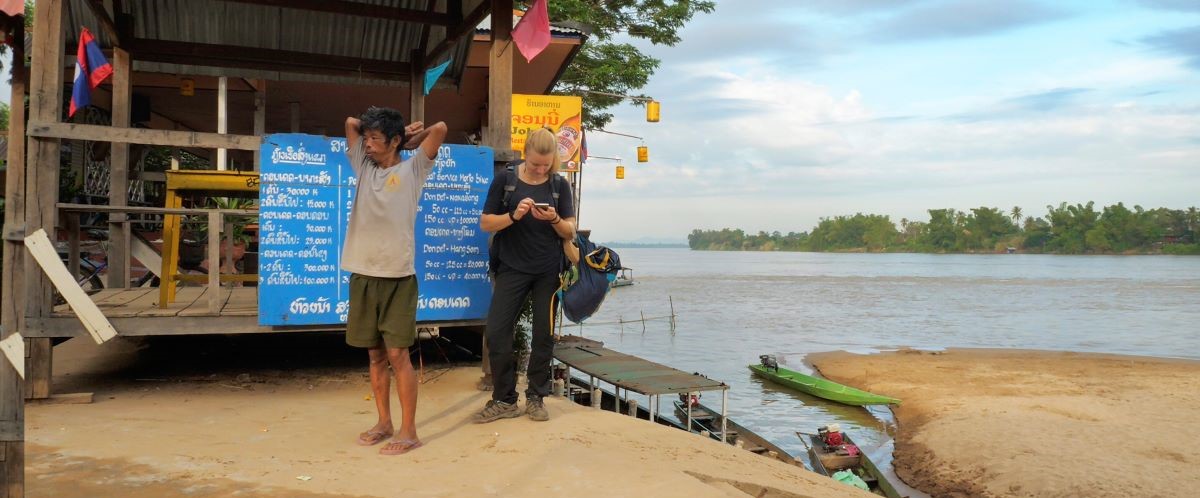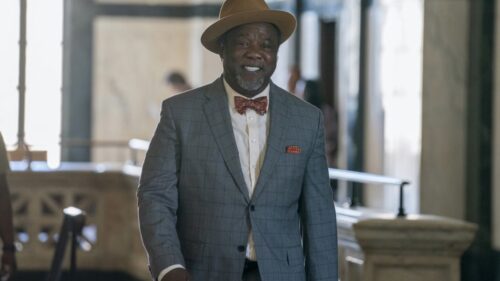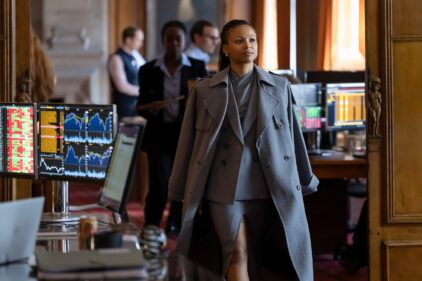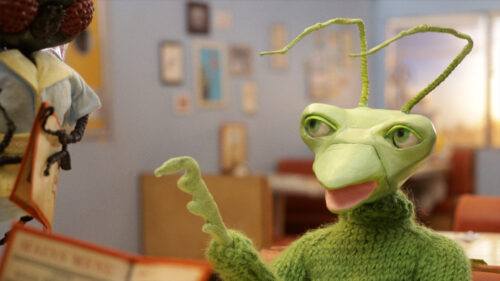The experimental documentarian and fiction filmmaker Kimi Takesue, in an interview with Filmmaker Magazine, said, recalling her struggles in getting this movie out into the world, “We need work that is impossible to describe.” On its surface, “Onlookers” is a movie that can be described very simply. For about an hour and twenty minutes, a series of very neatly composed shots depict natives of Laos and tourists observing a variety of sights and sites. This is accompanied by sound, of course, most of it diegetic, but clearly mixed to a fare-thee-well — the birdsong in shots taking place in the morning is particularly vivid.
We open with a solidly framed shot of a temple, its façade a glittering gold that lives to reflect sunlight. A little later on we see a temple in a state of far-gone disrepair. A line of monks walks up a sidewalk, and local residents drop coins in the cups they hold — a form of alms-giving — and tourists on the other side of the scene take snapshots. Because Takesue is filming with a small digital camera around other people taking pictures, her presence doesn’t create much stir, except when it does, as when a chubby schoolboy, about eight, starts looking back at the camera and mugging and posing for it.
So, this is not a movie that actually teems with event. Some of the views, particularly of the Mekong River (at least I presume it to be the Mekong — the movie has no subtitles or explanatory titles fixing the places it visits) are very picturesque. Nothing happens, or maybe better to say that the viewer has to come to some conclusion about what is happening besides nothing. What Takesue leaves out is important. We don’t see money changing hands. We don’t see scenes of night or nightlife. We hear people speaking English, and more people speaking French — “Laos” itself is a French word, the capital of the country is Vientiane, and the country was long a part of what was called “French Indochina.” So we can think, as we watch, about colonialism, national identity, the spectacles and the leisure activities and the climate that attract tourists, and so on. But all this lifting is up to us. If you’re not up for it, all you have is … a series of pictures.
This is the kind of movie that not merely allows, but practically invites, film studies MFAs the world over to flex their degrees by verbally bench-pressing the Ideology of the Shot, which is a real concept to be sure, but man, some intellectuals can overexert themselves into inadvertent hilarity with it. The shot of some white folks in a semi-outdoor bar, sprawled on benches indifferently looking at a rerun of “Friends” on a triptych of TV displays can potentially really put the “AAAARRRRRRR” in “Baudrillard” if you get what I’m saying, and I think you do. Viewers lacking advanced degrees (and I am one, actually) may miss out on some of the potential engagement.
That sounds glib, I understand. And I myself got enough out of “Onlookers” that I don’t ultimately feel it belongs in the “For Avant-Garde Documentary Lovers” category exclusively. You don’t need a degree to grok the global-village irony of a barkeep writing on a chalkboard “REGGAE BAR: Back To My Roots” while Toots and the Maytals’ “Reggae Got Soul” blares from his boombox-quality audio system.




















